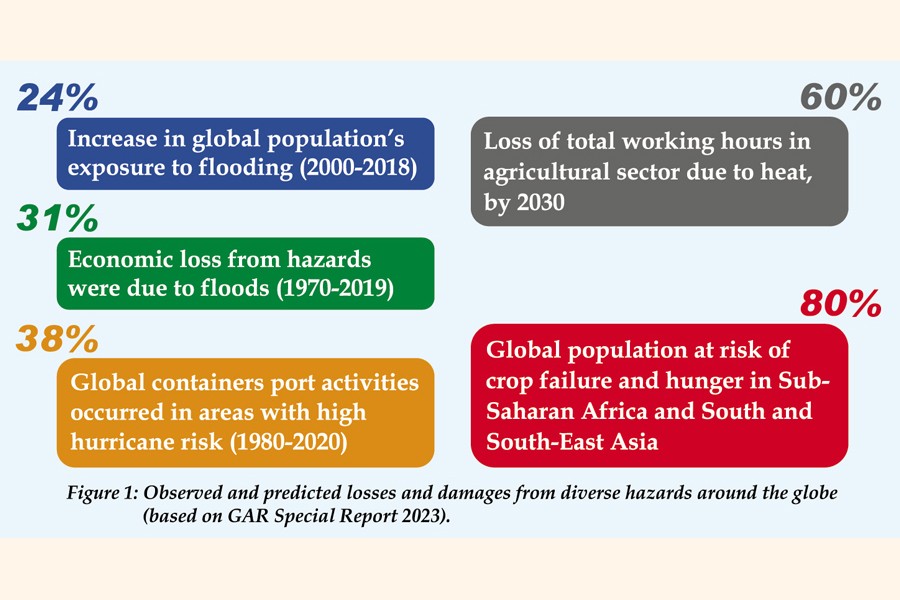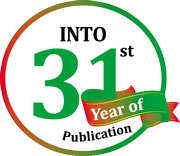

 Climate has indeed changed -- from Bolivia and Botswana to Bangladesh and beyond. The big industrial countries were supposed to reduce their greenhouse gas emissions fast to keep the average global temperature increase below 1.5 degrees centigrade compared with what it was in the pre-industrial times. If you haven't heard, these climate change mitigation measures are not happening swiftly enough. As a result, despite global dialogues, negotiations, and hue and cry for the last 30 years, the 1.5-degree limit is going to be crossed sometime in the 2030s. July 2023, being the hottest month in the last 120,000 years, serves as yet another danger sign on the road to a boiling world.
Climate has indeed changed -- from Bolivia and Botswana to Bangladesh and beyond. The big industrial countries were supposed to reduce their greenhouse gas emissions fast to keep the average global temperature increase below 1.5 degrees centigrade compared with what it was in the pre-industrial times. If you haven't heard, these climate change mitigation measures are not happening swiftly enough. As a result, despite global dialogues, negotiations, and hue and cry for the last 30 years, the 1.5-degree limit is going to be crossed sometime in the 2030s. July 2023, being the hottest month in the last 120,000 years, serves as yet another danger sign on the road to a boiling world.
Despite such a grave situation, we have no other choice but to adapt to the effects climate change is bringing upon us. Although over the last two decades, we have been seeing increasing adaptation efforts, recent hydro-meteorological events in different parts of the world show that adaptation measures are not enough to fight climate change.
What does loss and damage mean in climate change?
When adaptation fails, we face climate change-induced loss and damage, which are essentially the harm from observed impacts and anticipated risks from climate change. These harms result from both extreme events, such as floods, cyclones, storm surges, droughts, heatwaves, and wildfires, and slow-onset events, such as sea-level rise, salinity intrusion, ocean acidification, desertification, land degradation, and biodiversity loss.
In terms of the nature of the impacts, we may see both economic and non-economic losses and damages to our social, cultural, economic, and ecological systems. We understand well and can readily calculate the economic losses from a disaster, such as losses to agricultural production, household income, assets, land, water, supply and value chains, markets, and infrastructure. But, it is still a challenge to calculate the non-economic losses. Such losses may include loss of human lives; impacts on people's physical, mental, and emotional health; and non-market losses. This could also include loss of social cohesion, traditional and indigenous knowledge and practices, culture, heritage, belief system, biodiversity and agrobiodiversity.
Considering its geographical location, one might question whether a country like Bangladesh, which has always been disaster-prone, can attribute floods and cyclones to climate change. Attribution science can help us here. Computer models are showing that the extreme events we are now experiencing are due to anthropogenic climate change. For example, in 2017, the unusual 6-day torrential rainfall we saw in north-east Bangladesh in March, and the country-wide floods we faced in August, would not have happened without climate change. Global assessments predict that if global temperature increases by 2 degrees centigrade, riverine floods will cause 170 per cent more damage if we don't take enough adaptation measures.
How are losses and damages increasing around the world?
Global disaster-related loss has increased significantly in recent decades. The United Nations' GAR (Global Assessment Report on Disaster Risk Reduction) Special Report 2023 shows how our gains to achieve the Sustainable Development Goals (SDGs) are being tarnished by the increased frequency and intensity of disasters. For example, only in 2020, 820 million children were exposed to heatwaves, while 920 million faced water scarcity. Figure 1 captures some examples of observed and anticipated hazard-related losses as compiled in the GAR Special Report 2023.
In Bangladesh, the National Adaptation Plan of Bangladesh 2023-2050 (NAP2050), approved in 2022, presents loss and damage estimates for recent years. The damages caused by the riverine floods, for example, in 1988 ($1.2 billion), 1998 ($2.8 billion), 2004 ($6.6 billion), 2007 ($1 billion), and 2017 ($900 million) estimated a significant portion of the country's GDP. The flash flood of 2022 severely affected 7.2 million people in nine northeastern districts of Bangladesh, and the livestock loss was about $28 million. Cyclone Amphan (May 2020) caused an estimated loss of $110 million during the COVID-19 pandemic. In terms of slow-onset events, 1 parts per thousand (ppt) salinity-affected areas are expected to increase by 7.5 per cent and 5 ppt areas by 9 per cent in the 2050s.
What are being done globally to address loss and damage?
In addition to mitigation and adaptation, the need to tackle increasing loss and damage has been realised for some time now. The 19th Conference of the Parties (COP19) to the United Nations Framework Convention on Climate Change (UNFCCC) established the Warsaw International Mechanism for Loss and Damage (WIM) in 2013. After that, although the Santiago Network for Loss and Damage was formed at the COP25 (2019), vulnerable countries had to go through painstakingly long negotiations over the next decade. The COP27 (2022) at Sharm El-Sheikh, Egypt will be remembered as a landmark assembly for its decision to establish a new fund to respond to and address losses and damages associated with climate change. Throughout 2023, discussions have been going on under the auspices of the UNFCCC on how to operationalise this new loss and damage (L&D) fund to be agreed on at COP28 in Dubai, UAE (30 November-12 December 2023).
How are current loss and damage-related funds being spent?
It is important to understand in which areas L&D-related funds should go. In principle, funds should be channelled to take loss and damage actions (L&D actions) to avert, minimise, and address both economic and non-economic losses and damages. Before extreme events happen, crucial actions include improving the Climate Information and Early Warning System (CIEWS). This will help to take anticipatory actions before a disaster hits an area. In Somalia, for example, in 2022, when below-average rainfall took place, which was acting as a pre-agreed forecast threshold, and the drought became imminent, a pre-arranged fund was released to the pastoralist households to get ready for the drought. After a disaster happens, on the other hand, one area of funding is the relocation of climate change-affected people. Fiji's 'Climate Relocation of Communities Trust Fund' is the world's first national trust fund for the planned relocation of climate change-affected people. Recovery and reconstruction of damaged infrastructure is a crucial area to channel L&D finance after a disaster, as we often see in Bangladesh's haor and coastal regions. We also need to invest to avoid or minimise loss of human lives, negative health impacts on people, biodiversity loss, and cultural heritage loss.
There are several global climate change funds, such as the Global Environment Facility (GEF), the Green Climate Fund (GCF), and the Adaptation Fund (AF). A recent analysis showed that these funds already allocate certain portions of their money to tackle loss and damage. For example, about one-fourth of the GCF projects showed a clear link to loss and damage. Since the new L&D Fund will take a while to be operationalised, we may expect that these three funding pots will allocate more money to avoid and minimise loss and damage over the next 4 to 5 years. We also need to talk about other non-climate funding sources, such as the Global Biodiversity Framework Fund (GBFF), to be managed by the GEF. Established in August 2023, the GBFF's main aim is to halt biodiversity loss by 2030, under the Kunming-Montreal Global Biodiversity Framework. But given that climate change is causing loss of biodiversity and ecological degradation, money should also be channelled from the GBFF for L&D actions.
What can Bangladesh do to finance L&D actions?
Starting in the financial year 2015-2016, Bangladesh's climate-relevant budgets have been 7.3-8.6 per cent of the total budget of 25 ministries and agencies, and 0.7-0.8 per cent of the country's GDP. In the financial year 2023-2024, the climate budget is more than Tk 370 billion. As a new, evolving issue, Bangladesh's annual climate budgets don't explicitly talk about loss and damage. But, if we closely look into these budgets, loss and damage issues are being addressed by allocating funds under the Bangladesh Climate Change Strategy and Action Plan's (BCCSAP) Food security, social protection and health; comprehensive disaster management; and Infrastructure themes. To respond to the observed and projected losses and damages with effective L&D finance, Bangladesh needs to focus on three specific areas.
First, we need to improve our understanding of loss and damage for Bangladesh. Our risk governance system should appreciate climate change's attribution to our evolving disaster scenarios: unusual rainfall in 2017; worst floods in Greater Sylhet in 2022; and Cyclones Mocha (May), Hamoon (October), and Midhili (November) hitting Bangladesh's coast in 2023, for example. This understanding will help us to decide on which L&D actions we should adopt, for which sectors. This will also guide us if we should continue pursuing weather index-based crop insurance, pilot and adopt anticipatory action with prearranged funds or raise national L&D funds through resilience bonds.
Such understanding will also help to realise why we need to increase our efforts to address non-economic loss and damage, especially caused by slow-onset events. Climate change-induced displacement of people, for example, and the decrease in social cohesion and rise of social tension by such relocation should be seen through the L&D lens and tackled accordingly. Similarly, loss of traditional, indigenous and local knowledge and practices should also be brought into the L&D conversation. The nexus between climate change and mental health, especially in poverty-stricken communities, is yet to receive due attention. Improved knowledge of loss and damage can help us to understand, respond to, and track such multifaceted challenges.
Second, On 25 June 2023, in a column in The Financial Express, I proposed that the segregation of the climate budget according to six themes of the BCCSAP is not relevant to today's world. We need to bring in themes, such as Nature-based Solutions (NbS) for natural resource management-related climate actions, Locally-led Adaptation (LLA) for governance-related actions, and Green Growth for low carbon-related actions, for example. As we have entered the era of L&D, I once again underscore the need for introducing the 'Loss and Damage' (L&D) theme in our climate budget. This will then avoid the misrepresentation of budget allocations and will bring in disaster risk reduction, shock-responsive social protection, and disaster risk finance (e.g., anticipatory actions, index-based insurance, or resilience bonds) under one umbrella.
Finally, just before COVID-19's first case was reported, the Bangladesh Parliament unanimously adopted a resolution on 'Planetary Emergency' in November 2019. The reason for that was strong and forward-looking - the world had been facing not only a climate crisis but also a biodiversity crisis due to the rampant destruction of our ecosystems and environment. As noted above, climate-induced biodiversity and agrobiodiversity loss are linked to non-economic losses. We need to develop a framework to determine the value of our biodiversity loss. This will help us to demand funds from the GBFF, and integrate our efforts to tackle climate and biodiversity crises together. At the same time, Bangladesh needs to establish its own 'Biodiversity Conservation Fund'. The provision for this fund was approved by the president when he signed Bangladesh Biodiversity Act, 2017, on 19 February 2017. We should capitalise on the increasing attention to L&D finance to expedite our action to address dual crises - climate change and biodiversity loss.
Dr. Haseeb Md Irfanullah is an independent consultant working on environment, climate change, and research systems; and a visiting research fellow at the University of Liberal Arts Bangladesh (ULAB). He could be reached at hmirfanullah@outlook.com
© 2025 - All Rights with The Financial Express
